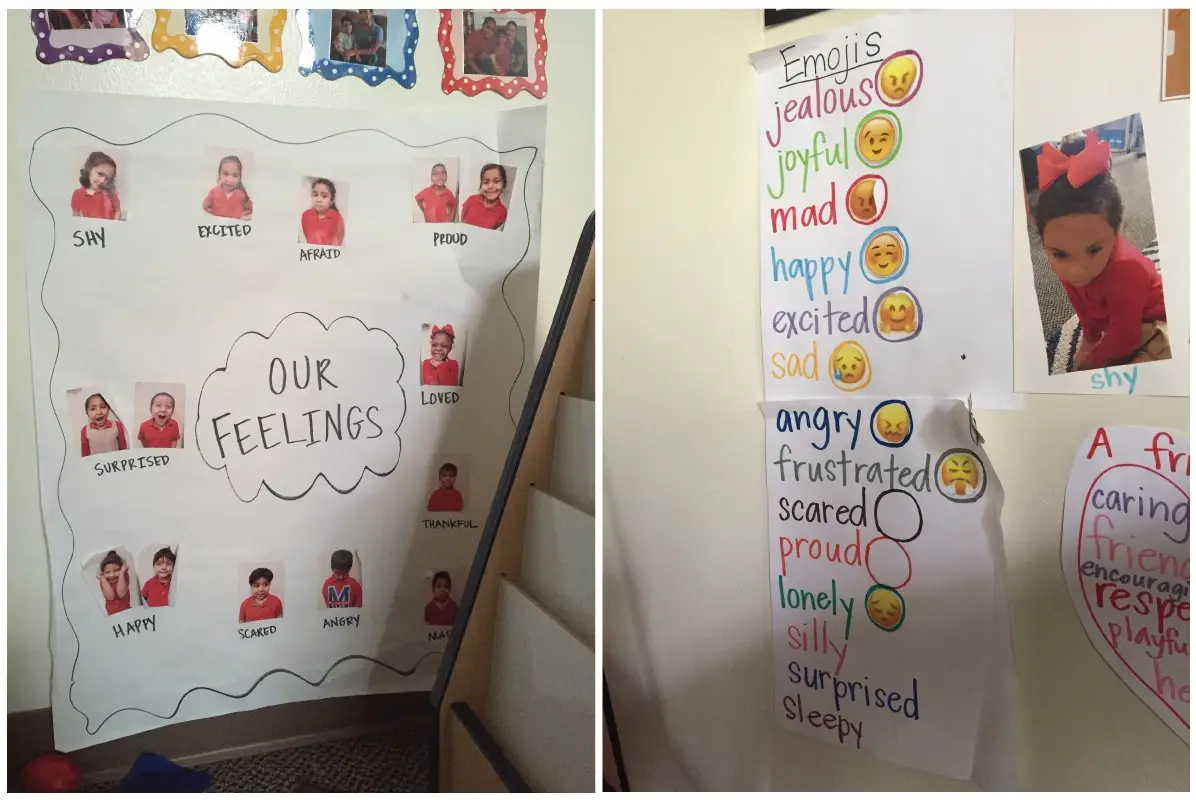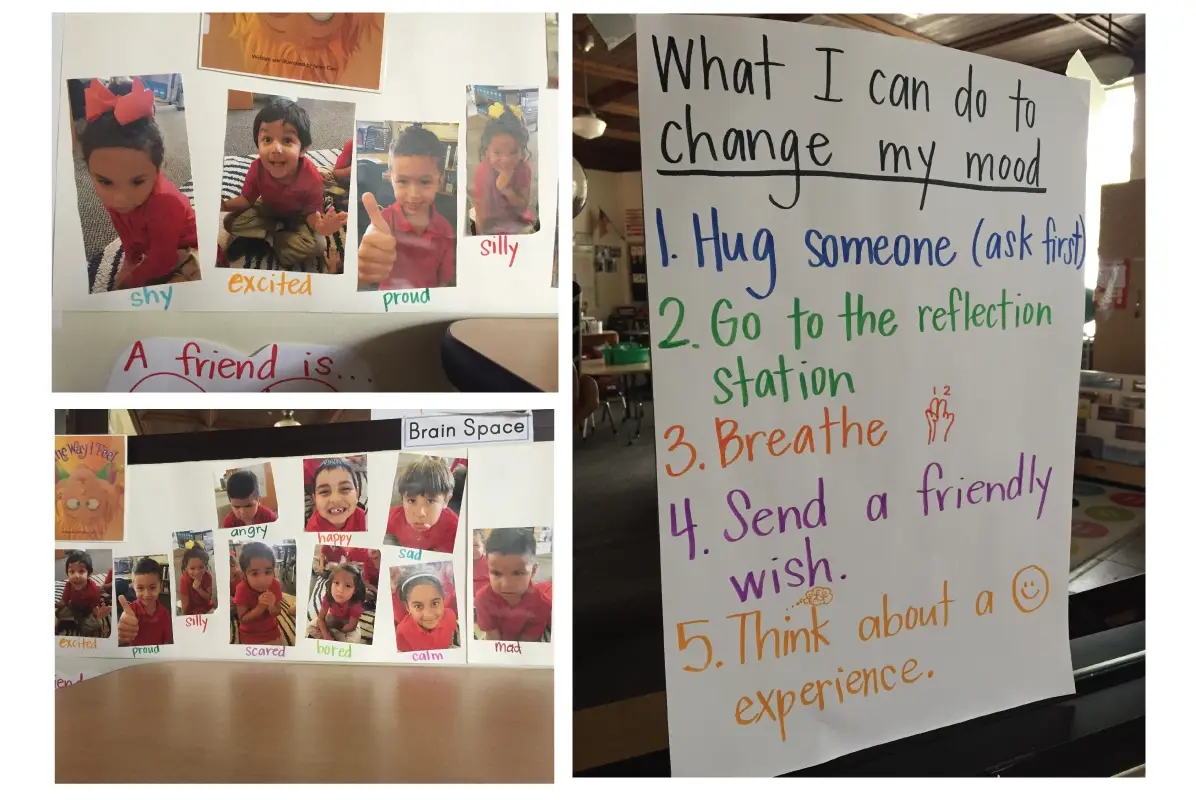Behavior is communication.
Children aren’t always able to use their words to express how they’re feeling. But we know that they can show us! When a child starts crying, or throws a book, or hides under the table, or puts her head down on her desk, she is communicating with us.
Behavior is an opportunity for skill building.
We don’t look at misbehavior as something wrong with a child. Rather, we see misbehaviors as skill deficits. What skill is this child still working on? Why did she throw a book? What skill does she need to develop there?
Because we look at discipline with this approach, we take different measures to address misbehavior. Rather than school-wide or classroom-wide behavior management approaches, we look at each incident as an opportunity to help the child develop skills.
One way that we do this is by creating a calm down space.
Each classroom in our school has a space – some call it a Brain Space, a Peace Space, or some other name – that is solely dedicated to helping children manage their own behavior. Each one is different, but they all have common elements.
Feelings names: The calm down space has pictures and names of feelings. The point of this is to give young children a really robust vocabulary around feelings. When kids know more than “sad” and “happy”, they’re able to better understand the different emotions that they feel during the day. A child might feel ashamed, frustrated, or anxious, and knowing what he’s feeling is the first step to managing those feelings.
Calm down basket: Kids need something to pull them out of an “amygdala hijack” – that experience when emotions have completely taken over. We’ve written more about the calm down basket here.
A glitter ball! Of course! We love the glitter ball and so do our kids. Here’s a post about that.


All of these tools combined help build intrinsic motivation in kids. It helps kids learn to understand and manage their own emotions, rather than responding to an external motivator, such as a behavior chart. Keep in mind that behaviors are opportunities to develop skills. If a child throws a book across the room, the teacher can see that she’s frustrated and hasn’t yet developed the language and skills to manage her frustration. Then the teacher can utilize the tools in the calm down corner to help her gain those skills.
Share with
Related Resources